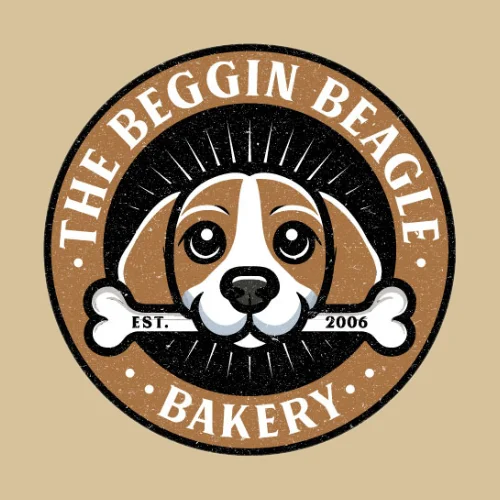Homemade Dog Treats for Allergies: A Guide to Safe and Delicious Snacking for Your Pup
As dog owners, we want the best for our furry companions, especially when it comes to their health and happiness. However, for dogs with allergies, finding safe and tasty treats can be a challenge. Allergies in dogs can stem from various sources, including grains, certain proteins, and artificial additives found in commercial treats. That’s why making homemade dog treats tailored to your pet’s dietary needs can be a game-changer.
In this blog post, we’ll explore the benefits of homemade dog treats for allergies, common allergens to avoid, and a step-by-step recipe to create a delicious and allergy-friendly snack for your pup.
Why Choose Homemade Dog Treats for Allergies?
- Control Over Ingredients: When you make treats at home, you have full control over what goes into them. This allows you to avoid potential allergens and include only the healthiest ingredients.
- Freshness Guaranteed: Homemade treats are free from preservatives and artificial ingredients often found in store-bought options. You can ensure your dog is consuming fresh, wholesome snacks.
- Cost-Effective: While specialty hypoallergenic treats can be expensive, making your own is often more budget-friendly, especially if you buy ingredients in bulk.
- Tailored to Your Dog’s Needs: Every dog is unique. Whether your pup has a grain allergy, a sensitivity to certain proteins, or other dietary restrictions, homemade treats can be customized to suit their needs.
Common Allergens in Dog Treats
When preparing homemade treats for your allergic dog, it’s essential to identify and avoid common allergens. Some of the most frequent culprits include:
- Grains: Wheat, corn, and soy are common allergens. Opt for grain-free flours like coconut, almond, or chickpea flour.
- Proteins: Some dogs are allergic to specific proteins like chicken or beef. Alternatives like turkey, duck, or fish are often safer options.
- Dairy: Many dogs are lactose intolerant, so it’s best to skip cheese, milk, or cream.
- Artificial Additives: Preservatives, artificial colors, and flavorings can irritate sensitive dogs.
If you’re unsure what your dog is allergic to, consult with your veterinarian and consider an elimination diet to pinpoint the triggers.
Recipe: Allergy-Friendly Sweet Potato and Oat Dog Treats
This recipe is perfect for dogs with grain sensitivities or allergies. It uses simple, natural ingredients that are gentle on the stomach and full of nutrients.

Ingredients:
- 1 medium-sized sweet potato (cooked and mashed)
- 1 cup oat flour (you can make this by blending oats in a food processor)
- 1/4 cup coconut flour
- 1 egg (or a flaxseed egg for egg-free diets)
- 2 tablespoons coconut oil (melted)
- 1/4 teaspoon cinnamon (optional, for added flavor)
Instructions:
- Prepare the Sweet Potato: Peel and cube a medium sweet potato. Boil or steam until soft, then mash it into a smooth puree. Let it cool before using.
- Preheat Your Oven: Set your oven to 350°F (175°C) and line a baking sheet with parchment paper.
- Mix the Dry Ingredients: In a large bowl, combine the oat flour, coconut flour, and cinnamon (if using).
- Add the Wet Ingredients: Stir in the mashed sweet potato, melted coconut oil, and egg. Mix until a dough forms. If the dough is too sticky, add a little more coconut flour.
- Roll Out the Dough: Lightly flour a clean surface with oat flour. Roll out the dough to about 1/4-inch thickness.
- Cut into Shapes: Use cookie cutters to create fun shapes or simply cut the dough into squares with a knife.
- Bake: Place the treats on the prepared baking sheet and bake for 20-25 minutes, or until they’re firm and golden.
- Cool and Store: Let the treats cool completely before serving. Store them in an airtight container in the fridge for up to two weeks.
Baking For Sensitive Paws: The Best Flours For Dogs With Allergies
Additional Tips for Homemade Dog Treats
- Test Small Batches: When introducing a new treat, start with a small amount to ensure your dog doesn’t have a reaction.
- Freeze for Freshness: Homemade treats can be frozen for up to three months. Simply thaw as needed.
- Experiment with Flavors: Substitute sweet potato with pumpkin or banana for variety, and consider adding dog-safe ingredients like blueberries or peanut butter (ensure it’s xylitol-free).
Want more homemade dog treat recipes?
Download our FREE Dog Treat Recipe Book!
Your dog will be BEGGIN for more!

The Nutritional Benefits of This Recipe
- Sweet Potato: Packed with fiber, vitamins A and C, and beta-carotene, sweet potatoes support healthy digestion and immune function.
- Oat Flour: A great gluten-free alternative, oat flour is rich in fiber and easy on the stomach.
- Coconut Flour: High in fiber and low in carbs, coconut flour adds a subtle sweetness while supporting healthy digestion.
- Coconut Oil: Known for its skin and coat benefits, coconut oil also has antimicrobial properties.
- Cinnamon: In small amounts, cinnamon can provide antioxidant and anti-inflammatory benefits.
Signs Your Dog May Have Food Allergies
If you’re not sure whether your dog has food allergies, look for these common symptoms:
- Itchy skin or excessive scratching
- Red, inflamed patches on the skin
- Frequent ear infections
- Digestive issues like vomiting or diarrhea
- Excessive licking of paws
If you notice any of these signs, consult with your vet for proper diagnosis and treatment.
Final Thoughts
Making homemade dog treats for allergies is not only a thoughtful way to care for your pup but also a practical solution to avoid potential allergens. By using simple, wholesome ingredients, you can create treats that are both nutritious and delicious. Remember to consult with your vet if you have concerns about your dog’s diet or allergies.
Try the Sweet Potato and Oat Dog Treats recipe today and watch your pup’s tail wag with delight! Share your experience or your own allergy-friendly recipes in the comments below. Let’s make snack time safe and enjoyable for all our furry friends.
